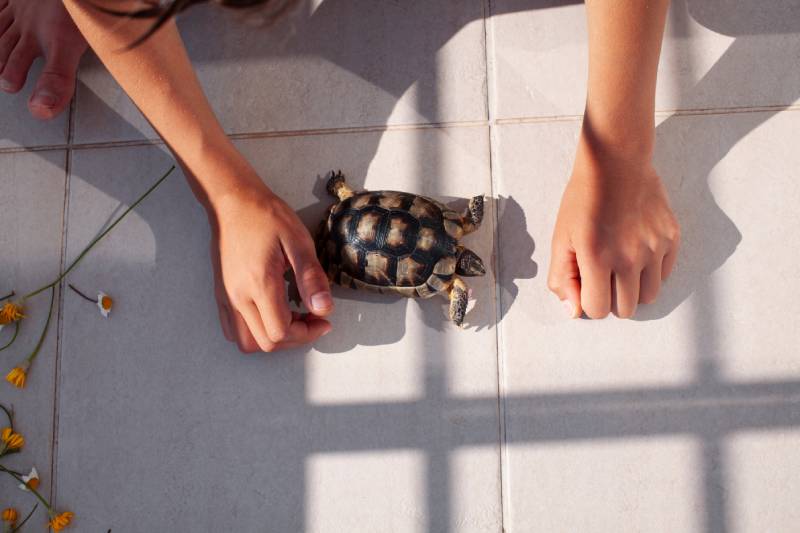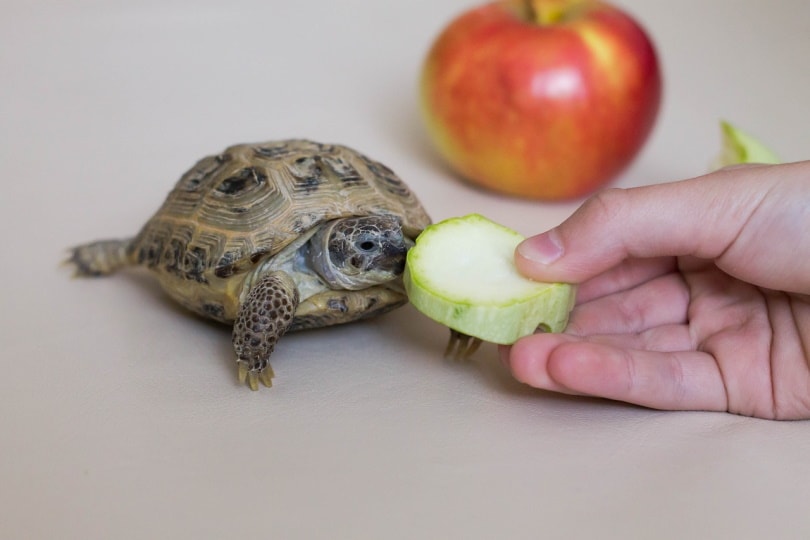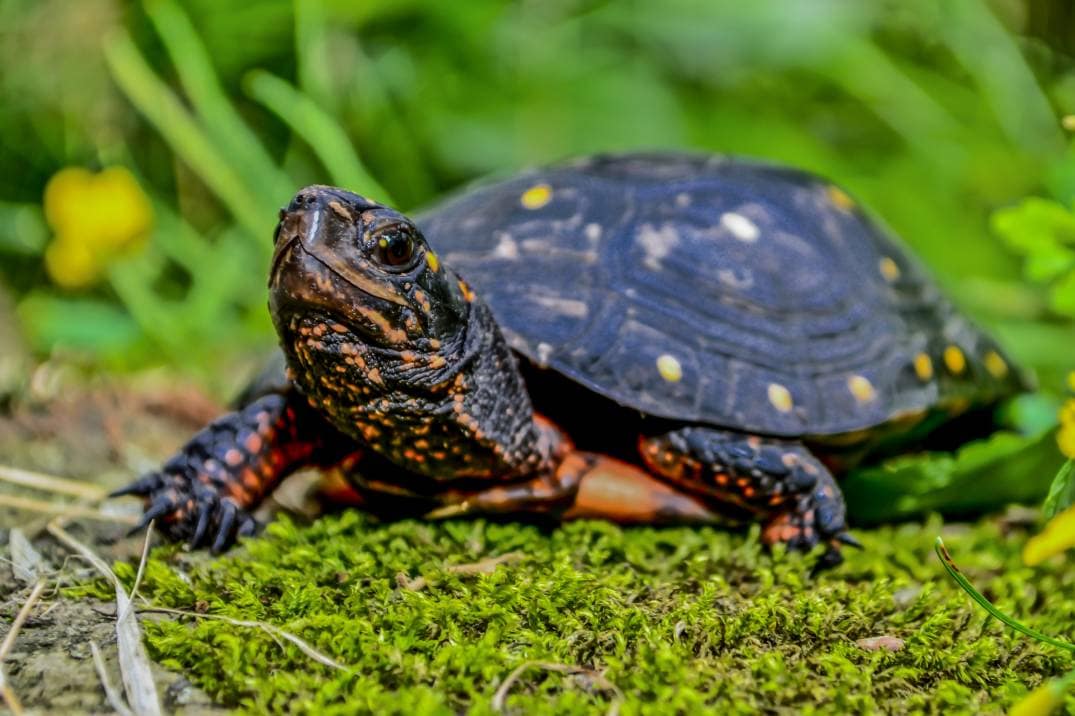Do Turtles Like to Be Held or Pet? Tips, Facts, & FAQ Leave a comment
Turtles are exotic pets that are becoming more common across America. While a turtle isn’t a pet that will interact with you as a dog or cat would, many owners wonder if turtles like to be pet or held. The answer is that most turtles, unfortunately, don’t want to be picked up or carried. However, most pet turtles can appreciate being petted! It’s all in how you approach them. This article will look at how you can pet and touch your turtle safely in a way that they will enjoy!

Why Don’t Turtles Like to Be Held?
Turtles are frequently kept as pets but aren’t domesticated and aren’t used to a human’s presence. Most pet turtles get used to their owner being around and follow them with their eyes or around the house when roaming.
However, because turtles are naturally always close to the ground and right-side up, being picked up or moved around is unnatural to them. The movement will likely cause your turtle a lot of stress, so it’s best to keep them on the ground unless you have to handle them.
Despite common misconceptions, a turtle’s shell is also sensitive to touch. Turtle shells are made of keratin (the same material as our fingernails) and are formed into plates called scutes. Each scute is connected to the turtle’s nervous system with nerves running through it, so turtles can feel it when you touch their shells! It feels similar to how we feel when something touches our nails.

How Do Turtles Like to be Petted?
Because turtles can feel it when we pet their shells and skin, some learn to enjoy being petted by their owners. A gentle shell rub can be a relaxing experience for your turtle and an excellent way to bond with them.
However, it’s important to remember that most turtles will still not enjoy being petted, which could cause stress. Because a turtle’s shell is so sensitive, petting them the wrong way could cause them harm or pain. Some turtles (such as the Eastern Box turtle) can “box up” inside their shells tightly, which can hurt your fingers!
Is Petting My Turtle Dangerous?
Before you decide to touch your turtle, it’s important to understand the risks of handling them. Your turtle naturally carries salmonella, which can cause significant illness in people. Salmonella is commonly carried in turtles’ digestive systems and can be present even in healthy turtles.
It can be transferred onto surfaces in your turtle’s environment, the tank water, and the items around them, like their food bowl. Therefore, handwashing is extremely important when handling your turtle and their items. Salmonella is particularly dangerous to young children or those with a weakened immune system, so washing your hands thoroughly and cleaning your turtle and their tank away from the kitchen and bathroom is important!
Turtles can also bite when afraid or stressed since they’re not domesticated animals. Some turtles have a dangerous bite, and most can break the skin with their beak. Make sure to handle them with care, keeping your fingers out of the way of their beak.

How To Touch Your Turtle Safely
If you need to handle your turtle (for medical reasons or to move them), you can do so safely. Turtles can be seriously hurt if they’re handled roughly or dropped.
To handle your turtle safely, follow these tips:
What Else Can I Do to Bond With My Turtle?
Enrichment in the form of hand feeding can improve the bond with your turtle. Turtles can be given treats by hand using a special pair of soft-ended tongs or tweezers to protect your fingers. Some turtles learn to approach their tank when their owners enter the room so that they provide another treat!
Modifying your turtle’s tank can also help them bond with you. Adding furnishings such as branches, hollow logs, leaf litter, and edible plants can allow your turtle to display natural behavior and keep them happy; the more relaxed and comfortable they are, the more they’re likely to bond!


Final Thoughts
Turtles aren’t the most affectionate pets and are not fond of being held or handled. They aren’t domesticated, and some are wary of big humans! Picking up and handling your turtle can also be risky for both of you. Turtles can carry salmonella bacteria, and handling a turtle too quickly can damage internal organs or cause pain. It’s best to observe your turtle from afar and bond with them by offering them treats.
Featured Image Credit: Jay Ondreicka, Shutterstock

